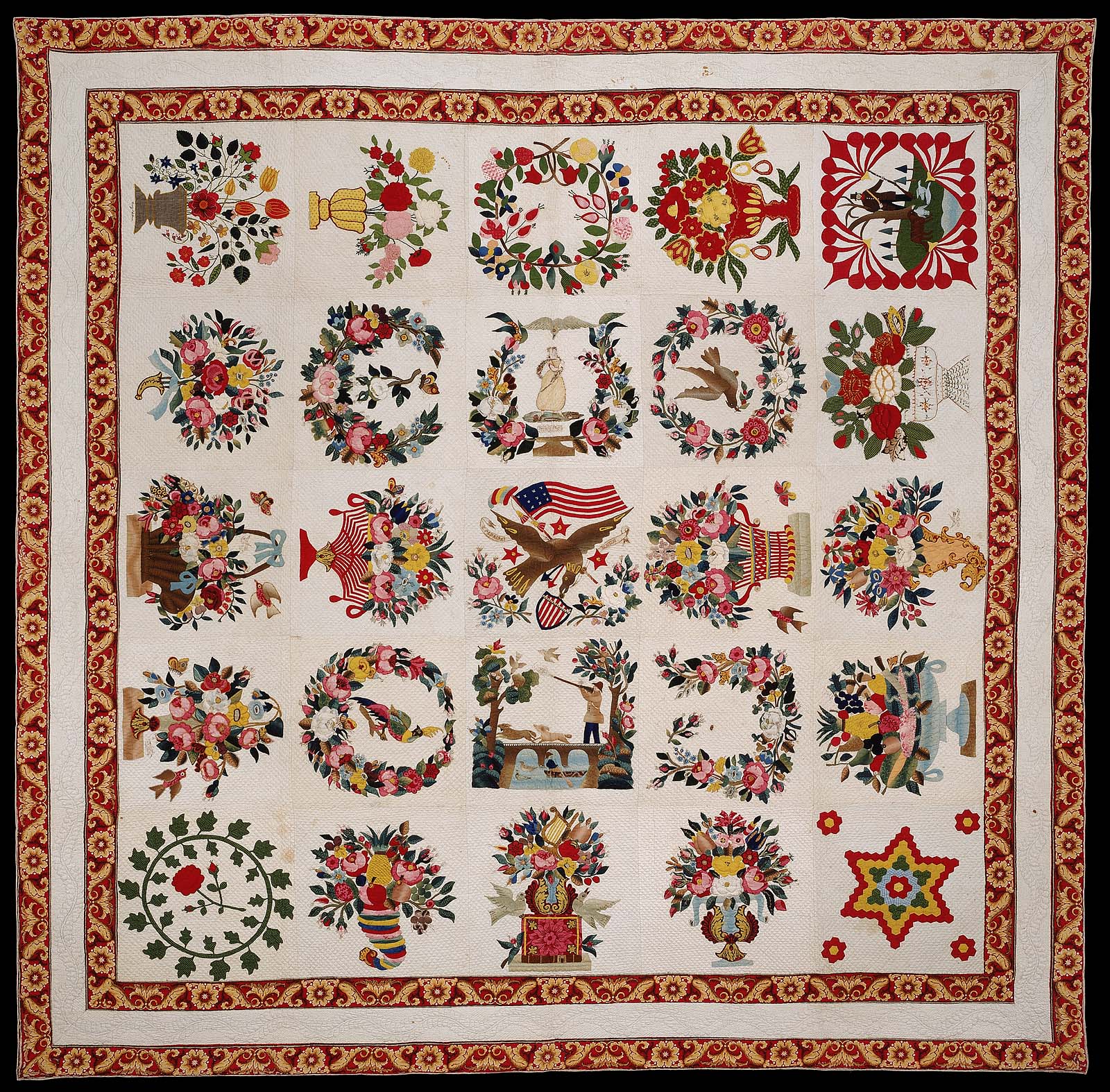Planning my Trip to Baltimore (Quilt Style)
Posted by Claire on May 14 2015
*Waves* I know I’ve been MIA for a while. I taught a full four courses this term, and started reading for my next round of exams in August. Sewing time has been limited and blogging even more so. But now that the winter term has wrapped up, I can focus on the things I’ve let slide.
I haven’t spent a lot of time at my machine recently. Although I dropped off my Tangled Stars quilt and a cute lap quilt that I made for my sister over Christmas to Alison a few weeks back, made a few quick outfits for my nieces, and even started a quick sundress for myself, I’ve really dialed back on my smocking and sort of cleared the deck. I’ve still got a few small projects on the go, but the last little while, I’ve tried to get all my loose ends tied up in preparation for my next big, BIG undertaking…something I’ve been planning for for over a year.
A full size Baltimore Album Quilt.

If you’re not a quilter, you might not be familiar with the term. It’s a type of applique quilt, usually worked on a white background, with really elaborate baskets, flowers, vines and tendrils. They’re often red and green and gold, but not always. Here are a couple of period examples.
Some are symmetrical or nearly so, some have a different design in every block that showcase things like local buildings or little quilted people. They were a popular quilt style on the East Coast, especially in seaports likes Baltimore in the 1850s and 1860s. The MFA in Boston and the Baltimore Museum of Art both have sizeable collections online for you to admire.
I’ve wanted to make one for a couple of years now and when I came across this modern recreation by Sue Garman, called “Friends of Baltimore“, I knew I’d be making it. She’s an extraordinarily talented quilter and many of her quilts are applique. I am in love with the borders on her design. Seriously, aren’t they gorgeous? Well, everything about this quilt is gorgeous but for me, it’s the borders that make it.

Of course, I will be making a few changes to some of the blocks and swapping out a few more. For one thing, I don’t want an eagle on my quilt (I’m glad it’s the longest undefended border and all but I don’t really want a big ol’ symbol of America in the middle of my bedding). And I am eliminating all of the cornucopias. I hate cornucopias – I think they look like unformed worms. I don’t know if it’s a childhood trauma from kindergarden or what but they aren’t going to be making an appearance on my quilt. I’ll use vases instead.
I was determined not to start this quilt til I had caught up on all my unfinished projects. Of course, that didn’t *entirely* happen but I’m close enough that if I squint everything looks done-ish. 

I went with ordering the entire quilt pattern. In a binder, it’s a good 1 1/2 thick! That’s a lot of instructions and I won’t lie. It’s a bit daunting. But the directions are impeccable and I’m confident I’ll be able to handle this quilt.
In addition to clear patterns for each block, Sue includes a plethora of tips and suggestions and breaks down this incredibly labour intensive quilt into very manageable chunks.

Each block also includes the fabric list so you know how large each piece you need and how many shades of each colour you’ll use.

The directions are really, really thorough. I even toyed with the idea of hand applique but after a long hard talk with myself I’ve decided to go with invisible machine applique instead.
I’m going to be using freezer paper for the applique pieces. I used mylar very successfully with my Spring Bouquet but unlike that pattern, which only had a limited number of standard, reuseable shapes, the pieces of this quilt are entirely irregular. I found 8 1/2 x 11 sheets of freezer paper at a local quilt shop, and I’ll copy, reverse and print off the freezer paper, which will save me having to trace off every piece. I got the idea from Simple Bird Applique’s blog. She’s been working on a gorgeous hand-stitched version of FOB for a couple of years, and I’ve been following her progress avidly. She’s just embarked on the quilting. It’s very inspiring.

So that’s where I stand on this monumental project. I have most of my fabrics (I just picked up the backing fabric yesterday) and have ordered the last few tools I’ll need before I take the plunge. So…much…fun!




































